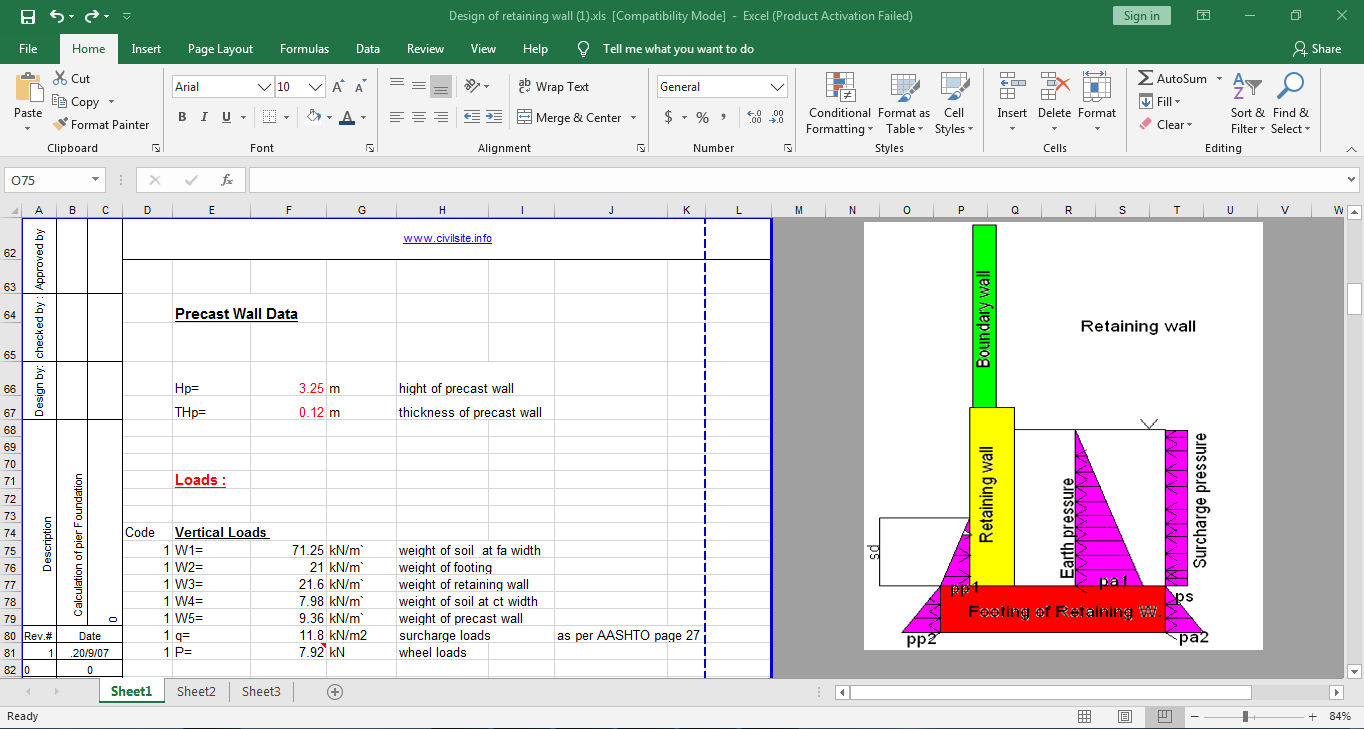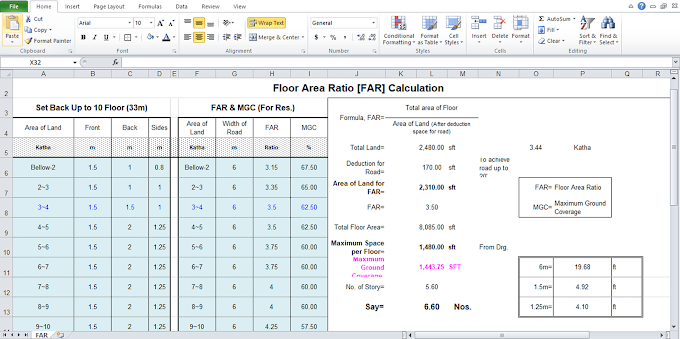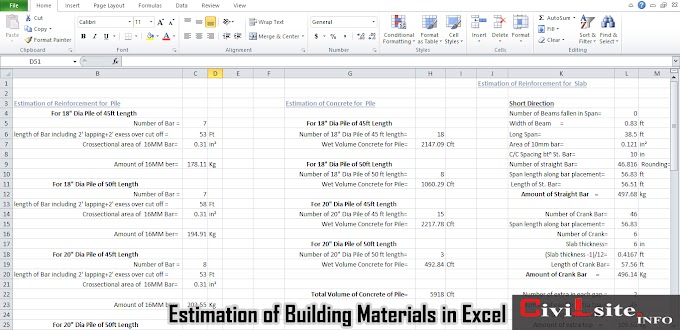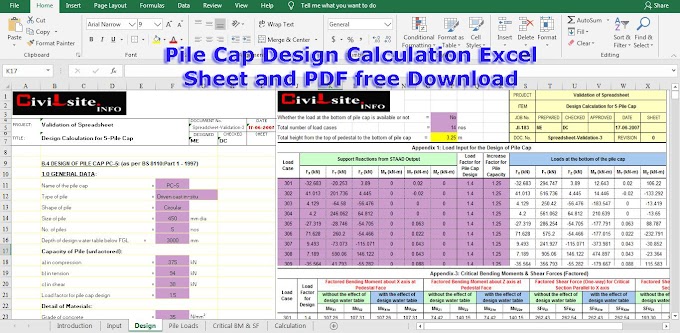Designing a retaining wall involves several calculations including soil properties, wall geometry, loads, and stability checks. While I can't provide an Excel spreadsheet directly here, I can guide you through creating one yourself. Here's a basic outline of what your spreadsheet could include:
Input Section:
·
Soil properties (e.g., unit weight, friction
angle, cohesion)
·
Wall geometry (e.g., height, length, thickness)
·
Load information (e.g., surcharge, live load)
Calculations Section:
·
Calculate the active and passive earth pressures
using appropriate methods like Rankine's theory or Coulomb's theory.
·
Calculate the resultant forces acting on the
wall including surcharge, live load, and the weight of the wall itself.
·
Determine the overturning moment and the
resisting moment.
·
Check the stability of the wall by comparing the
overturning moment to the resisting moment.
Output Section:
·
Display the calculated values including forces,
moments, and stability check results.
·
Optionally, you could include graphical
representations of the retaining wall and the forces acting on it.
Sensitivity Analysis:
·
Allow for variations in input parameters to
observe how they affect the stability and design of the retaining wall.
Here's a simplified example of how you might structure your
Excel spreadsheet:
|
Input Parameters |
Value |
|
Soil
Unit Weight (γ) |
120
lb/ft³ |
|
Friction
Angle (φ) |
30° |
|
Cohesion
(c) |
100 psf |
|
Wall
Height (H) |
10 ft |
|
Wall
Length (L) |
30 ft |
|
Wall
Thickness (t) |
1 ft |
|
Surcharge
Load (q) |
50 psf |
|
Live
Load (w) |
20 psf |
Then,
you'd have columns for intermediate calculations and results, like active and
passive earth pressure calculations, resultant forces, overturning moment,
resisting moment, and stability check.
Download Excel Spreadsheet: Retaining wall design calculator
More Design Files: Footing Design in Excel
For each calculation, you'd use Excel formulas. For example,
to calculate active earth pressure, you might use the formula for Rankine's
earth pressure:
Where Ka is the coefficient of active earth pressure,
calculated based on the friction angle.
Similarly, you'd have formulas for other calculations and
results.
Remember to use appropriate units and formulas specific to the methods you're employing for design and analysis. Additionally, you might want to add error checking and validation to ensure the input parameters are within reasonable ranges.
















0 Comments